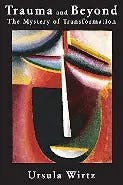In exploring the many faces of trauma and the divergent claims that have been made with regard to it, what comes to mind is the old Sufi parable of the blind men and the elephant, in which five blind men encounter an elephant and examine it by feeling its body parts. Each likens the elephant to an object that is familiar to him, based on the body part he touches, and each is convinced that he knows what an elephant is, yet none of them has any idea what the elephant looks like as a whole.
Trauma has similarly been conceptualized in multifarious ways. Mardi Horowitz holds that traumatic life events have the traumatic effect that they do because they cannot be assimilated into the victim’s inner schemata of self in relation to the world.1 According to Ronnie Janoff-Bulman, traumatic events destroy the victim’s fundamental assumptions about the safety of the world, undermine the positive value of the self, and cause a disturbance of affectivity, a state Thomas Ogden calls “formless dread.”2 Henry Krystal asserts that trauma produces a regression in affect, a deficit in the capacity for symbolic representation, and fantasy formation.3 D. W. Winnicott emphasizes the necessity of a good “holding environment” to deal with the disintegration anxiety caused by traumatic events with their menacing threat of nonexistence.4 Heinz Kohut’s self-psychology model speaks of the dissolution of a coherent self under the influence of trauma.5 In analytical psychology, Donald Kalsched shows how trauma ruptures the transitional processes of human relatedness that constitute meaning.6 As Robert Jay Lifton sees it, trauma victims suffer from impaired human relationships, from what he calls “the broken connection,” which results in a state of being outside of culture, “our means of symbolizing death and continuity.”7 Lifton believes that trauma disrupts the capacity to develop images and symbolic forms that provide a sense of continuity. He claims that these symbols must be transformed and reanimated in order to find new meaning.
The common thread in these various views is that the ego’s central role as a planning, controlling authority is powerfully exploded by trauma. Traumatic experiences may thus lead to a radical breaking in and breaking apart of existing ego structures, resulting in a disintegration of the previous psychic structure. The psychological concept of self-regulation and control and the consciousness of being an autonomous, intentional human agent no longer hold. Being helpless, handed over, determined by outside forces, these are the coordinates of traumatic experience. In a traumatic event, ego boundaries are overrun, and one learns that the everyday ego is utterly insubstantial. As a result, the ego undergoes a monstrous relativization, being degraded to meaninglessness and threatened with fragmentation and destruction. The ego, which once guaranteed one’s identity, seems to have no use any more. One is overcome by a sense of extreme vulnerability. For the annihilation of the ego is a form of dying.


